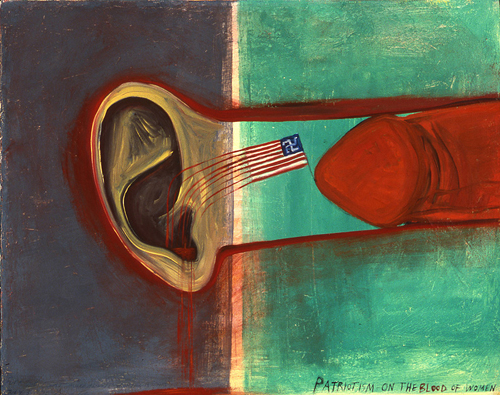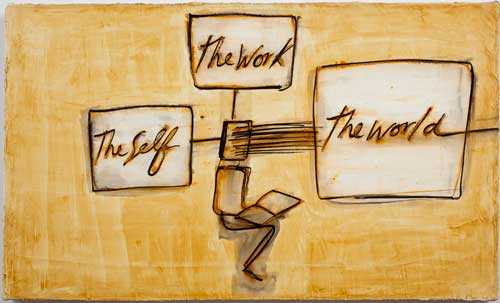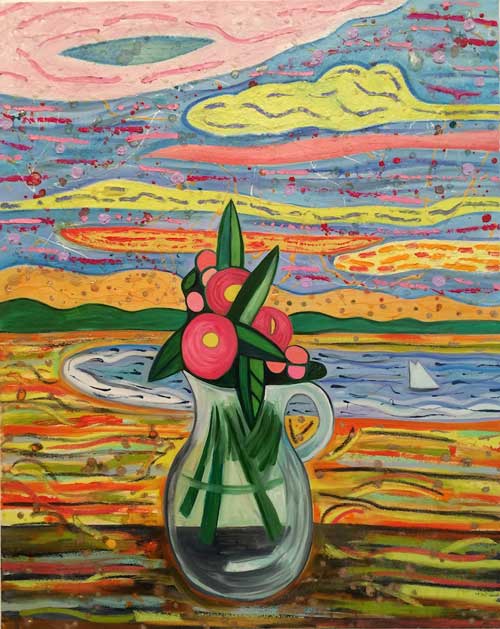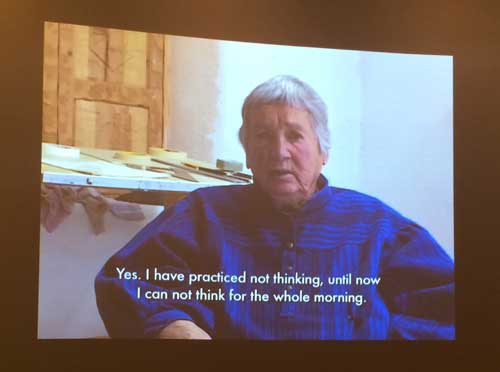1.#PERVSCHOOL
What we are learning from the series of exposures of sexual assault and harassment by figures from Weinstein and other Hollywood directors I have never even heard of and now Knight Landesman at Artforum constitutes a veritable textbook of psychopathological deviance and perverse behavior put to the specific use of abusing and harassing women in the workplace.
I used to wonder if New York landlords all took the same course where they learned such typical techniques as how to go from cajoling a tenant with too good to be true promises to two seconds later seconds threatening your life if you didn’t accept their offer. Recurring patterns of the MO of the sexual predators we have had to spend time with this past month makes you wonder if they all go to such a school to learn these techniques and behaviors. Well yes, they do, the school is one with the biggest student body on the planet, one we all attend, that is, patriarchy. Women attend too, since birth. Though born to and brought up by women, such men don’t seem to have attended matriarchy school or the we are all human beings school.
For those of us who don’t practice this kind of abusive behavior or who are fortunate to have never encountered it to such a blatant degree as revealed in these cases, this news has itself been a school in all kinds of violent and psychologically humiliating methods. Further as a recent article about the newest class of abusers, Leon Wieseltier and Mark Halperin, points out, one is asked to believe that there is no relation between the political views held by these male gatekeepers of public opinion and their personal derogation of women:
What does it mean that these men — and so many others liked them — held the power to literally shape America’s political narrative? What does it mean, as New York magazine’s Rebecca Traister noted on Twitter, that the story of, say, Hillary Clinton’s public career was told by these sorts of men?
One does not need to dig very deep into Halperin and Wieseltier’s work to find echoes of their private behavior in their public comments. “For Leon, women fell on a spectrum ranging from Humorless Prig to Game Girl, based on how much of his sexual banter, innuendo, and advances she would put up with,” writes Cottle. It’s an observation that sheds considerable light on Wieseltier’s oft-expressed contempt for Clinton. In 2007, Wieseltier told the New York Times that she was “like some hellish housewife who has seen something that she really, really wants and won’t stop nagging you about it until finally you say, fine, take it, be the damn president, just leave me alone.”
Art historian Anna Chave, among others, has made a related point about the women gatekeepers of art history, for example in her essay “Minimalism and Biography,” collected in the excellent anthology edited by feminist art historians Norma Broude and Mary D. Garrard, Reclaiming Female Agency: Feminist Art History After Postmodernism. Chave critiques the rhetoric of objectivity of minimalism by examining the personal relationships between the male heroes of the movement and their critical proponents: “In the radicalized 1960s, neo-Marxists, including partisans of Louis Althusser, elevated the categories of the material and the social over those of the individual or the subjective. For Marxists generally—as indeed for capitalism also—personal and expressive values have historically been derogated as secondary and tacitly, or otherwise, feminine, sine women have ordinarily been acculturated to assume their arenas as their proper domains…But in actuality, the leading Minimalists have been hardly less heroicized than prior members of the elite of art-historical canons. …Most of the critics who built their own reputations by building the reputations of artist in Minimalism’s inner and outer circles were friends and, at times, lovers or spouses or the same artists, a fact that is a matter of record on a piecemeal basis at best and thus is widely unknown outside the circles in question.” Same point in reverse.
The evening of October 10, 1991, I watched Anita Hill’s testimony against Clarence Thomas before the Senate Judiciary committee confirmation hearings. Chronology of events on Wikipedia places her testimony on the 11th but my diary from the period indicates that on the evening of the 10th as I ate dinner watching the hearings I shoveled food into my mouth without thinking and got a fish bone stuck in my throat–I was so transfixed by what I hearing I forgot to chew my food. The next day Friday October 11, the diary reads “watched Anita Hill but realized mid-day I had to go to hospital, went to Eye & Nose etc (sic) hospital 14th street got fish bone out.
A lot more pubic hairs have been added to that coke can since.
Of all the disgusting and arcanely perverse things I have read in the past few weeks these will stand out:
Once they left, Sivan says Weinstein leaned in and tried to kiss her. Sivan rejected that attempt and told him she had a long-term boyfriend. Weinstein then said to Sivan, “Well, can you just stand there and shut up.”
At this point, Weinstein and Sivan were in a vestibule between the kitchen and bathrooms. The only way for Sivan to get away from Weinstein required her to get past him and go through the kitchen. Sivan says she was trapped by Weinstein’s body and was intimidated.
Weinstein then proceeded to expose himself to Sivan and began to masturbate. Sivan said she was deeply shocked by Weinstein’s behavior and was frozen and didn’t know what to do or say. The incident in the vestibule didn’t last long. Sivan says Weinstein ejaculated quickly into a potted plant that was in the vestibule and then proceeded to zip up his pants and they walked back into the kitchen.(Huffington Post)
She went for the door. He told her he couldn’t let her go unless he had sexual release. All she needed to do was pinch his nipples and look into his eyes and he would press himself against her and come in his pants. She felt she had no choice. And while it was happening, she tried to look away, but he grabbed her head and made her stare into his eyes.(LA Times)
“In one alleged instance, Landesman learned that Elisabeth McAvoy, who was in her 20s and an Artforum employee, was living with her sister and was told, according to the complaint, “that she should move out so that her sister could ‘come herself to sleep.’ ” (ARTnews)
“Do you want a walnut? Let me feed you walnuts.” (Artnet)
In its editorial today, “Will Harvey Weinstein’s Fall Finally Reform Men?” the Editorial Board of The New York Times declares that, “This may turn out to be the year when the tide finally turns on sexual harassment.” They point to all the positive statistics of women in the labor force that might suggest that. They don’t point to the recent election of a pussy-grabber and to the regressive views about women held by the Christian fascist who may replace him if necessary.
Here are some of my experiences with recent moments of awakening and public attention to sexual harassment.
- #HASHTAGFEMINISM
Just about one year ago, right after the release of grab em by the pussy tape, author Kelly Oxford started a Twitter wave “Women: tweet me your first assaults.” If you’re on Twitter take a look back. Thousands of tweets an hour at one point. Add these to the #METOO wave which started about ten days ago. #METOO though compared to so many women I’ve just dealt with fairly minor gross and inappropriate behavior + insidiously subtle & annoying forms of sexual harassment—the greater toll has come from all the professional situations where the anger at my feminist views and critical writings or representations in my work would suddenly be revealed and I’d realize how that anger affected my career in ways I was usually oblivious to believe it or not.
In the midst of the wave of #MeToo posts on Facebook and Twitter in the past few days, “#MeToo was all over Twitter, Facebook and Instagram — over 500,000 times on Twitter and 12 million times on Facebook in the first 24 hours alone according to an Op Ed piece in the New York Times, I realized that I had kept a screen shot taken during a previous similar hashtag wave, #YesAllWomen. Does anyone even remember that? I didn’t even remember what caused that episode of sharing (Rebecca Solnit had to remind me that it was in the reaction to the Isla Vista shooting, the kid who set out to kill the prettiest sorority girls because no one wanted to have sex with him).
Did that hashtag make a difference? Will #MeToo make a difference? Did the revelations of how pervasive sexual harassment and abuse are stay in public consciousness or change anything? Asked and answered.
I chose a particular screen shot of #YesAllWomen because of the tweet at the top, “#YesAllWomen because how often does a man text his friend to say that he got home safe?” Many women are sharing stories of outright rape, gross abuse, repeated dangerous and humiliating encounters, as well as pervasive experience with the kind of slights that seems minor, that one brushes off, diminishing many of those experiences in one’s own mind to the point of drawing a blank, I think as a defense mechanism so that one can continue.
That one sentence about women calling their friends and their mothers and sisters to say that they got home safe is the closest to the experience shared by all women, and it is enough to indicate a societal and global issue. From the minute a girl is allowed to go from one place to another by herself, she is instilled with fear by caring fearful adults. That alone is sexual abuse. That alone is something that must be dealt with and negotiated with within oneself. That alone is a limitation on women’s ability to fully inhabit a public and even a private life. Not all women live with the same degree of fear, most women continue to trust, and that trust has been made clear as a mechanism in several of the stories about Landesman’s abusive behavior as a publisher of Artforum, but still, I think the fear is very deeply instilled at an early age. I think back to one aspect of my childhood in New York City: my mother would insist that I take a taxi home from my best friend’s house across the park, but then I would sit in the back seat with my hand practically on the door handle thinking about how to jump out of the car if the driver looked like he was going to veer from his course. Now that cars have locks controlled by the driver I have my phone at the ready. So not only was it ingrained in me from an early age that there were dangers, all children do have to learn that but girls in a special way, but even that what was supposed to keep me safe could also be a source of danger. That is the basic plot line of many horror movies with young women protagonists: the killer is in the house, call the police, the police is the killer.
The point is that all women since childhood have to deal with at the very least, that fear and the necessity for heightened awareness, limitations on one’s movements, and shame as the weight of the abuse falls on the women. I think back to a conference held at Hunter College in the wake of the Clarence Thomas/Anita Hill public hearings, one of the speakers, I think Amber Hollibaugh, said, every time she — Anita Hill, any woman—speaks her story of abuse, she IS sexuality, she IS the crime that was perpetrated on her…those weren’t the exact words, it’s a long time ago, but it rings true through to today, that when women do speak up, they get revictimized, even just by the act of speech, they embody the crime rather than the crime being embodied in the abuser—and yet if they don’t speak up no one thinks about it and the perpetrators go on and on without punishment.
And that is what is most disturbing and significant: for each woman who has had an encounter that ranges from violent crime to daily annoyment, there was a man who did it. Since I think that basically #YesAllWomen, that makes for a lot of men. So now we have #NOTALLMEN. But if it is 100% #Yes AllWomen then #whatpercentageofmen? So the problem seems to be in how masculinity is defined or more to the point, how over centuries patriarchy has defined woman as lesser.
I used as an epigraph to my first published writing, “Appropriated Sexuality,“ a few lines from a poem by Muriel Ruckeyser,
Whoever despises the clitoris despises the penis
Whoever despises the penis despises the cunt
Whoever despises the cunt despises the life of the child.
Because she is the source of life, she embodies the knowledge of death, and thus must be punished.
I first became radicalized and empowered by feminism when I was about nineteen. And here we are, with the hundreds of thousands of revelations of #YesAllWomen forgotten and not having brought about any change and #MeToo with us today. After all these revelations, and all these waves of feminism, and all these backlashes, a young woman still feels she has to say, oh OK feed me the damn walnut so I can get on with my work and keep my job.
There is no happy ending or solution to this rambling post just more hashtags because there are more abominations by the day.
For example last week (or was it last year, the current regime has made time a torment), General John Kelly waxed nostalgic about a past when “Women were sacred.” #Whenwerewomensacred? #Womenarenotsacredtheyarehuman #Ifwomenare“sacred”theyhavethegodlyrighttomakedecisionsabouttheirownbodies.Otherwisetheyareonly “sacred”as#broodmares #apologizeorresign
If the belief that women are not equal human beings is so deeply engrained in human civilization since the development of property rights, agriculture, and urban settlement, the battle to maintain and gain rights, parity and humanity is #endlessbattleforrights.
3. The women targets
The Consciousness raising sessions that were an intrinsic part of the Women’s Liberation Movement in the 1970s took place within living memory (mine at least), a movie like 9 to 5 came out in 1980, representing both a flowering of Women’s Lib and marking the end of that social movement and the beginning of the backlash against it. But in the intervening years there was still a lot of popular culture and popular rhetoric about the empowerment of young women. The Anita Hill episode was seen as a turning point in terms of reawakening feminist activism particularly at the legal level. Institutions have guidelines, don’t they? And the understanding I’ve been given—by several mini-generations of “post-feminists” and feminists, as a “70s feminist with all the stereotypical negative associations of that historical era, is that several new generations of young women since the 70s didn’t take shit from anyone.
But alas, they do, and I am not sensing that they feel the presence of a sisterhood that would back them up publicly as opposed to privately. As all women do, they at the very least told women friends but the story most often stayed there. Instead of feeling empowered to say, fuck off you perv, their first reaction has been the time-honored one: they tried to be polite, politic, and manage the situation if manageable—the situation of Weinstein and Toback also involve physical intimidation and violence. In the case of dealing with someone like Landesman or Leon Weiseltier, some eventually spoke up to the powerful man, which took enormous courage. But those conversations remained private as well so the behavior would continue.
By the way I am not writing here about the situation of women working for minimum wage who feel powerless and terrorized. The news in recent weeks is about abuse taking place at the top of professions with many of the participants well-educated women.
Can we crowd source a guidebook of techniques to deal with these creeps, from physical self-defense training—which is not relevant to every one of the millions of situations women encounter daily around the world–I think of a friend’s inspired response once when working for an abusive editor at a major (non art publication)–it wasn’t exactly sexual abuse as I recall though it clearly had a gendered substructure, he would yell at her and put her down viciously. Versed in feminist performance art, one day leaving his office where she had been yet again been verbally berated, she spontaneously got down on her hands and knees to crawl back to her desk through the open office space occupied by co-workers. By overtly enacting the position he was putting her in, she apparently shocked him into at least a moderate change in his behavior.
Most women have endured a lot of abuse without bringing complaints or legal action, although I would think that most companies and institutions would have strict rules about sexual harassment, if only to prevent lawsuits. My institution regularly insists that everyone take an online training course on discrimination and sexual violence. But the women who got huge settlements from FOX seem to be the glaring exceptions from what must be a huge pool of women who have been similarly degraded and controlled, among whom some waited and went along with their tormentors for years before taking action.
This becomes particularly problematic when there are women in the power structure.
4. The Women of the Institution #politesse
This past week, I was interested first by the case of Artforum Michelle Kuo, who resigned after the public statement by the publishers of Artforum. I do not know her and know very little about her influence in changing the publication or of her as a boss—indeed whether being editor in chief was considered a directorial position. But I was struck by the fact that some women in the art world commended/defended her while I had been wondering how she could not have known what was going on, since the kind of behavior Landesman “allegedly” engaged in included a lot of stuff that cannot be hidden. Saying intrusive uncomfortable , sexually inappropriate things is not the kind of thing that such men hide, though they may hide some of the creepier more pervy and intimidating stuff from their colleagues, guys who say stuff are the sine qua non of a woman’s life. In fact I think a round of applause is due for all work situations where this kind of stuff just doesn’t happen because the people are just decent. So how in a company with a relatively small staff and office footprint from what I know, could she not know? Did she not have some responsibility for the hostile work environment? Was she herself a victim? Or was she too a victim of the larger situation, like so many highly educated professional women in the art world, who have a deeply engrained sense of politesse and perfection of which one premise is that you do not question the hierarchy?
5.The other women of the Institution #ValiantWomen
Yesterday after reading the statement from Artforum employees “Artforum staff Condemns Magazine’s Management of Allegations,” I scrutinized the masthead of both Artforum and Bookforum, highlighting the names of those who had signed this declaration, so that I could also distinguish who had not signed. I thought about what the role might be or what one might reasonably expect from some for the most prestigious writers who are published in Artforum, such as the Contributors Editors: among these are such noted art historians and critics Jan Avgikos, Daniel Birnbaum, Yve-Alain Bois, Germano Celant, Thomas Crow, Hans Ulrich Obrist, James Meyer, and Katie Siegel.*
These masthead notables do not work at the offices of Artforum and they are not to my knowledge actual employees of Artforum. I could be wrong about that, but I doubt if they have contracts or receive a regular salary for occasionally contributing a text and being listed as a contributing editor. Thus they could legitimately say that they didn’t have anything to do with that aspect of the institution. But, still, I wondered, do they have anything to say, do they play a role, might not their views or support be of interest.
I have published writing in Artforum. Nowhere near the masthead but still, fewer than six degrees of separation. My first encounters with Artforum in the role of an art writer go back to a moment of significance in feminism, at the end of the highly contentious and polemic 1980s, the era of the backlash, of Jesse Helms, of ACT-UP, The Guerrilla Girls. In 1989 I was approached by Jan Heller Levi, then an Associate Editor, to publish a review of Janet Kaplan’s wonderful book on a wonderful artist, Remedios Varo: Unexpected Journeys. I knew Heller Levi through my work and circle of friends as the co-editor of M/E/A/N/I/N/G. After that, over a short span of two years, I published a number of significant features including a feature about the Guerrilla Girls and a cover article on Ida Applebroog. When Levi left, I worked with Deborah Drier on a more general essay “You Can’t Leave Home Without It” about the concept of home. Heller Levi and Drier were both knowledgeable and sympathetic editors and for all these pieces I had memorable editorial sessions with Ida Panicelli, then the editor who commissioned the Applebroog and Guerrilla Girls pieces. I call that feminism from the top. Incidentally Landesman was already an Executive Publisher, but I had no contact with him whatsoever, and was oblivious to any hostile work environment issues during my few but intense editorial conferences where I learned about arguing for “if” and “they” and other fine points of writing.
Twenty-two years passed before a few interesting new writing assignments came my way, not about directly feminist themes, but with a sense that I was asked in part because of my reputation as a feminist artist and writer. In this second phase, by the way, no office visits, everything is done by email, everyone very professional. In many of my interactions with this particularly institution, I feel that I have benefited from the support of women–editors, artforum.com editors and writers, reviewers, whose support I appreciated and who are among the employees who did sign the letter yesterday.
Women can and do mediate the careers of other women, writers, artists, only inasmuch as they have an allegiance, a solidarity, an intellectual and emotional identification with a feminist politics but also only inasmuch as they themselves have power within the institution and they only have power in the institution to the degree that they are able to negotiate the power structure or buy into the patriarchal hierarchy without forgetting their “feminist ideals,” the curious term used in Artforum’s first public statement about the charges against Landesman (cf.Hyperallergic wrap up “A Week of Chaos at Artforum Magazine Following Sexual Harassment Allegations” for the update on this rapidly developing story). Thus they have to manage their own support of women. This is particularly true of institutions where the top positions are held by men, so that constant politesse and negotiation must be engaged in at all times, in order to focus on the work by women as much as the situation will allow, with the top billing going to men by patriarchal default.
Micol Hebron’s analysis of Artforum’s covers is useful, with only 18% percent of covers since the inception of the magazine representing work by women artists. Hebron updated her survey this week but the percentage had not changed since she first assembled the research in 2015.
Many women artists owe a tremendous amount to the dedication of these valiant women in the institution. I think research would prove that they are responsible for a majority of lines on many a woman artist’s CV, all the smaller shows in university museums, the essays in feminist and small publications, and the always carefully strategized opportunities in more significant institutions. These valiant women of the institution do as much as they can to be inclusive of women. As Jennifer Higgie always says in her Instagram project on women artists history, “#bowdown.” Institutions might change if these women in the arts were raised to a bigger level of responsibility, so that what they think is important, what they are aware of, what they bother to respect, might be given room at the top of the institution. I think this might help change the culture of these work places.
*
I highly recommend an anthology that was published a year after the Anita Hill testimony, Race-ing Justice, En-gendering Power: Essays on Anita Hill, Clarence Thomas, and the Construction of Social Reality, edited and with an introduction by Toni Morrison.
It includes powerful essays in a range of modes from the legal to the poetic by authors including Homi K. Bhabha, Nell Irvin Painter, Andrew Ross, Manning Marable, Cornell West, and Patricia J. Williams. I’ll end this piece about a system of basic social inequity that, according to historian Gerda Lerner in The Creation of Patriarchy goes back to the earliest development of human civilization, with the end of Patricia Williams’s text, “A Rare Case Study of Muleheadness and Men or How to Try an Unruly Black Witch, with Excerpts from the Heretical Testimony of Four Women, Known to be Hysterics, Speaking in Their Own Voices, as Translated for this Publication by Brothers Hatch, Simpson, DeConcini, and Specter.”
So perhaps it is truth that any woman who is not a witch shall simply refuse to burn when tied to the stake. And perhaps it is truth, after all is said and done, that masturbation really does make men go blind.
- This text was published Sunday, October 29. On November 1, Artnet.news reporter Rachel Corbett followed her initial coverage of the Artforum scandal with an update, “Hans Ulrich Obrist, Molly Nesbit, and Other Artforum Contributors Condemn Publishers’ Handling of Harassment Scandal”‘ in which many but not all Contributing Editors composed their own letter of support of the Artforum staff.

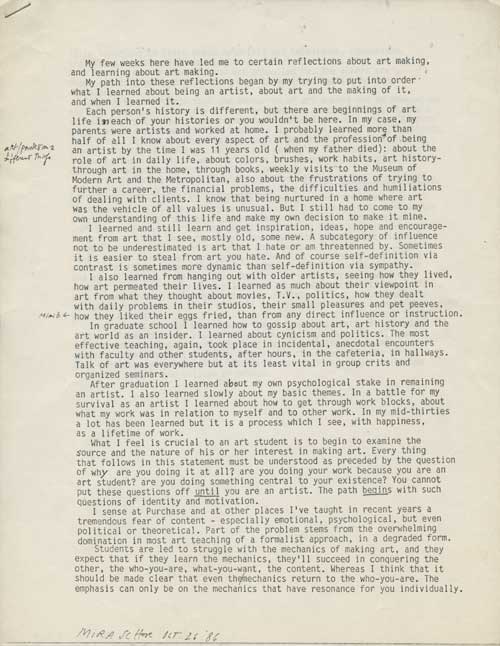
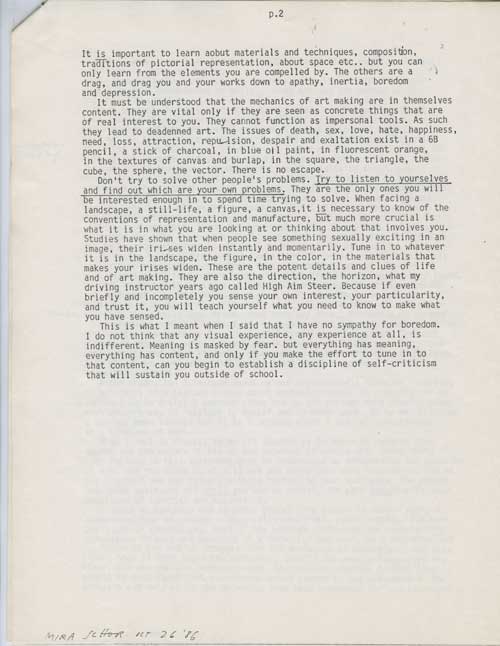



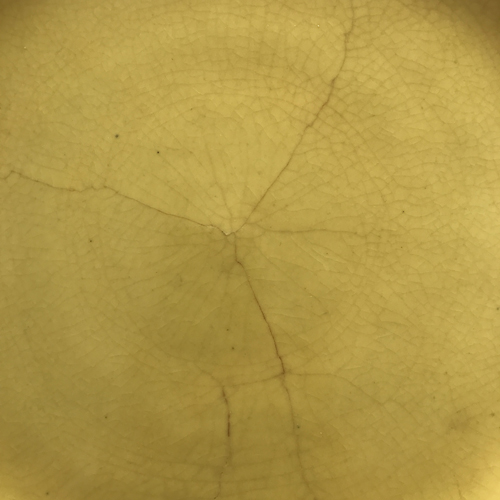
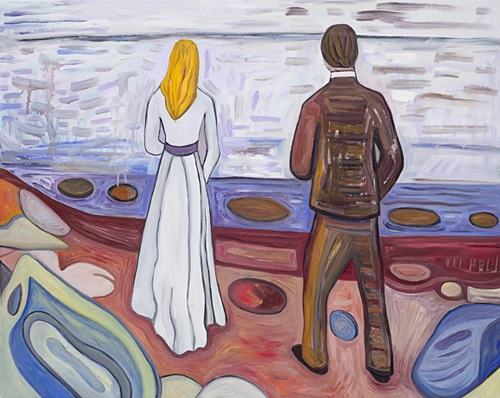
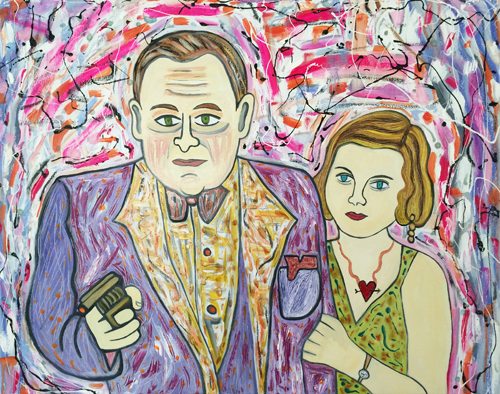

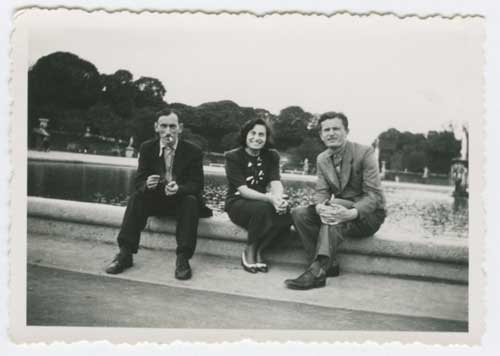
![Photo detail, Bartoszek, Paris, c. 1937; Stele installed in Czarnow in 1964: Franciszek Bartoszek, “Jacek” [code name “Jack”] Born October 27, 1910 in Pieranie, spent his youth in Czarnow, Painter, Ardent Patriot, Colonel of People’s Guard, Died fighting Hitlerist occupiers, May 15, 1943 in Warsaw.](https://ayearofpositivethinking.com/wp-content/uploads/2016/12/MIRA-bartoszek-composite-image.jpg)
